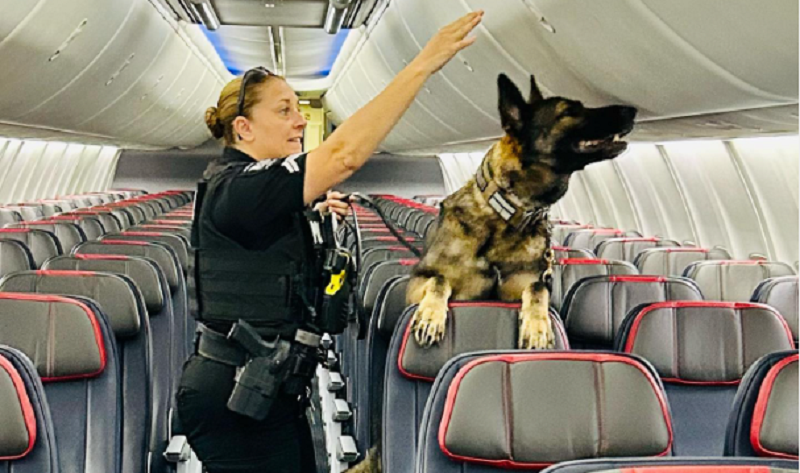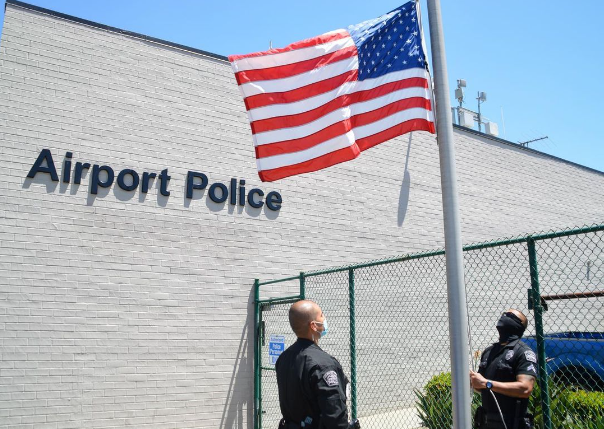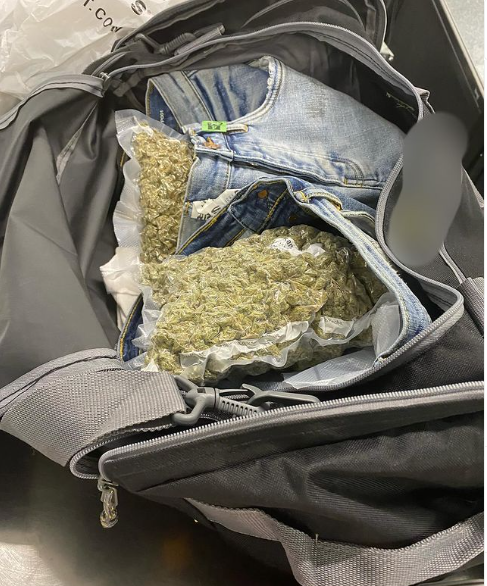
I came across footage depicting a brawl at Orlando International Airport whereby a man with two bloated bags (one seemingly shaped like a guitar case) was trying to breach security screening stations by pushing his way past Transportation Security Administration (TSA) agents. The general impression was that this individual didn’t feel his baggage should be screened despite the pre- and post-9/11 norms we have all grown accustomed to…and arriving early for pre-flight routines.
Maybe he was tardy and took it upon himself to grant a free pass to his gate/plane. Airlines provide special boarding measures for varying demographics, but this is not one of them.
With this melee, queries arose as to TSA agents and the hands-on protocols (if any) and arrest authority (if any) they have as federal employees. TSA agents work under the U.S. Department of Homeland Security (DHS) and wear official uniforms as federal civilian employees—they are not law enforcement officers.
Hence, Orlando PD cops came to the rescue and subdued the culprit right where he started trouble.
Who would somehow think that this brazen behavior would fly in a heavily scrutinized environment such as an airport…especially after the 9/11 catastrophes? There has always been a law enforcement presence at airports. Nowadays, it is understandably beefed up.
Many international airports have their own sworn strength of bona fide police officers employed by the airport (usually governed by that region’s transportation commission or similar), their headquarters and operational features right on airport premises.

(Photo courtesy of the Los Angeles Airport Police Department.)
Others contract with the law enforcement entity whose jurisdiction the airport operates, such as the Orlando International Airport patrolled by officers with the city police force. Typically, substations serve as airport HQ for the special unit cops who partner with federal law enforcement agents such as U.S. Customs and investigators with the Federal Aviation Administration.
Grounded
Before and after any flight departs/arrives, law enforcement does rounds within terminals and aboard planes. Depicted in our cover photo is Tampa International Police Department Corporal Dietz and K9 Tyson, a duo among their agency’s K9 unit, exhibiting how airport police forces employ dogs that are trained to sniff around and signal detection of the presence of narcotics or ingredients used to construct explosive devices.
Police canines also come in handy when an unruly person (like the one at the opening of this piece) decides to act lawlessly. Usually, barks and snarls magically subdue resistive individuals cops are trying to safely arrest without injuries to any parties involved, including the bad actor.
You might be wondering why a police K9 is sniffing aboard a plane, especially with so many layers of screening in our society’s airports.
Assuming everyone working in the airport ecosystem is diligently doing their job, there is less chance that contraband would get through screening stations undetected. Nowadays, nothing should be left to chance, and that defaults to cops scouring airport grounds and patrolling the throngs of flyers while also ensuring the safety and security of the inbound/outbound flow of pedestrians, automobiles, and deliveries made by truckers. Small things for “personal use” may get tucked away so well and make it onto an aircraft, then hidden before disembarking because a uniformed cop is in sight for whatever reason (like being a welcoming committee for passengers who created an in-flight disturbance and was reported by the flight crew before touchdown).
Since fentanyl is so deadly in such minuscule doses, airport police officers and certified drug-detecting canines deploy to ensure the craft is “clean.”
Similarly, our nation’s legislative acts permitting medical marijuana and limited quantities of recreational cannabis come into play when folks push the envelope (sometimes literally…through the screening station conveyor belt or in stow-away luggage).
On October 3, 2023, Los Angeles Airport Police officers came in contact with some leafy substance stuffed in freezer bags, contained within a passenger carry-on bag.

(Photo courtesy of the Los Angeles Airport Police Department.)
Although California statute permits some quantity of cannabis for personal use, anyone going beyond that is subject to arrest, and their supply confiscated as evidence for potential judicial proceedings. Much like a motorists’ driver’s licenses stating acknowledgments in black and white, attesting to DUI laws and violation consequences, medical marijuana cardholders are subject to the same standards and must pass a written examination outlining comprehensive dos and donts regarding transporting the substance and the limited amounts prescribed by law.
When a passenger exceeds the lawful allotment of cannabis packed in bags, airport cops launch an investigation and make arrests per statutory stipulations.
Along with the image of cannabis confiscated by the Los Angeles Airport PD was the following caption: “Narco at TSA screening. Don’t forget, [the] legal amount to transport for personal use is 28 grams (1 oz) Suspect was arrested for 11357 (c) HS.”
Staring Down the Barrels
Bigger fish to fry at airports involve firearms, and recent reports indicate the pool of fish packing firearms at airports is spiking.
From a bulletin about the Transportation Security Administration’s encounters with firearms:
“[…], the number of guns seized at airports across the United States is on the rise. As of October 3, 2023, more than 5,000 firearms have been found at airport security checkpoints this year alone.
Additionally, TSA agents are “intercepting nearly 20 unauthorized guns per day at checkpoints nationwide, putting the agency on track to break its annual firearms [confiscated] record.
“It is important to note that firearms are not permitted in carry-on baggage and must be properly packaged and declared at the airline ticket counter if they are to be transported on a flight.
“Passengers caught attempting to bring firearms in their carry-on baggage can face arrest or citations from local law enforcement” and may also be subject to “penalties from TSA up to almost $15,000 and risk losing their TSA PreCheck eligibility for five years.”
Per the Daily Voice, “A Connecticut man was seized at LaGuardia Airport on Tuesday after TSA screening revealed a loaded .380-caliber handgun in his carry-on bag.
“Port Authority police confiscated the gun and arrested the Newtown, CT man on a weapons charge after the Transportation Security Administration X-ray machine said on Oct. 3.” alerted a screener, the TSA’s Lisa Farberstein said on Oct. 3.”
As mentioned at the onset of this material, TSA agents have limitations. Concerning discovering firearms, either an airport police officer is already at the screening station or summoned to mitigate the scenario and take law enforcement action (confiscation, citation, arrest).
Several cops I used to work with retired from our force and, like many retired LEOs, returned to the police profession because the fish were not biting enough. One such officer joined an airport PD and is baffled by the brazenness of flyers who bring guns to airports without any of the common-sense precautions described by the TSA.
The thing that challenges the minds of an airport police force is the frequency of finding folks packing firearms at airports where there is a chronic flow of throngs of passengers distracted by the clock’s demand, directions to terminals, and zoning we ordinarily experience concerning flight-life.
Thankfully, amid all the hustle and bustle…and the potential perils amid the pace of travelers, law enforcement officers are gatekeepers overseeing the comings and goings at major hubs of transportation.